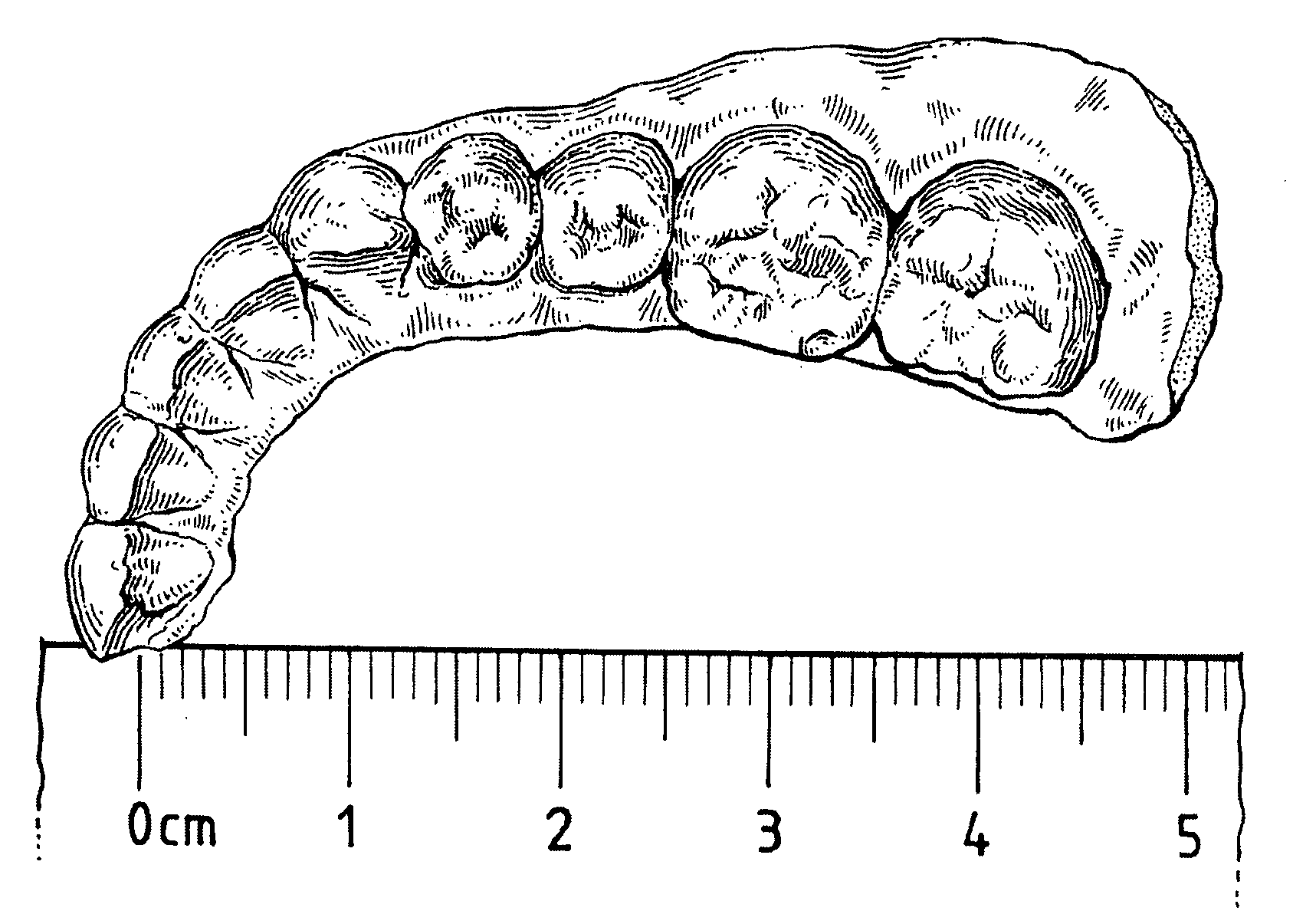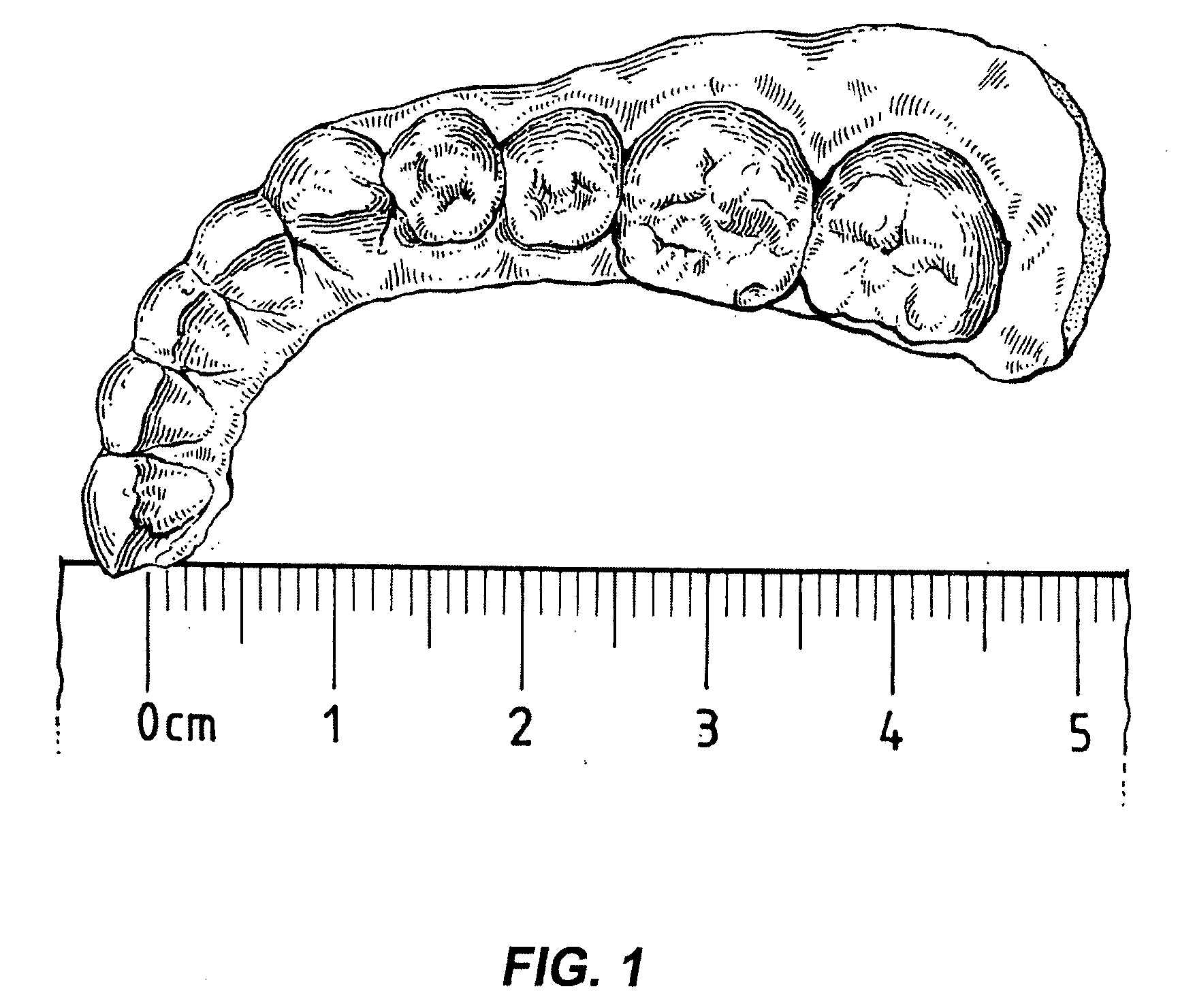Optical composition for impressions or replicas of small objects
a technology of optical composition and small object, which is applied in the field of composition, apparatus and method for preparing a 3d impression or replica of small object, can solve the problems that the digital photogrammetry method of surface measurement has not been known or applied to small objects, and achieves the effects of improving optical texture, facilitating photography, and maintaining particle size within the composition
- Summary
- Abstract
- Description
- Claims
- Application Information
AI Technical Summary
Benefits of technology
Problems solved by technology
Method used
Image
Examples
example 1
[0047] Creation of a replica from a composition containing an Epoxy Die material according to the present invention.
[0048] In this example a replica or negative impression of an object such as an artifact, tooth or test object is obtained by firstly creating a preliminary (negative) impression of the object. The preliminary impression is produced by conventional means to create a die having a mould space therein. A positive (replica) is subsequently obtained by loading the mould space with a liquid composition containing (a) a two-pack epoxy casting resin; (b) macro-particles of polymeric material having a particle size ranging between about 100 to 200 μm in diameter; (c) micro-particles comprising titanium dioxide; wherein (d) the ratio of polymer particles to titanium dioxide particles is 10:1 (by volume).
[0049] The polymer particles and titanium dioxide are pre-mixed in a ratio of 10:1 in a mortar and pestle to ensure that there are no lumps or particles larger than 200 μm. The...
example 2
[0052] A Composition according to the present invention for use in creating an impression of a small object. In this example an impression is made of a tooth from a composition which includes (a) a two-part polyvinyl siloxane base resin; (b) macro-particles of polymeric material having a particle size ranging between about 100 to 200 μm in diameter; (c) micro-particles comprising titanium dioxide; and (d) a catalyst for initiating curing of the polymer base; wherein (e) the ratio of polymer particles to titanium dioxide particles is 10:1. The polymer macro-particles and titanium dioxide particles are added to the polymer base in the above ratio in an amount such that a maximum filler loading is obtained for the resin while the resin still remains sufficiently fluid. The catalyst is subsequently added in a minor amount and the resulting composition is poured against the tooth to form a positive impression.
[0053] The positive impression is subsequently photographed to generate stereo...
PUM
| Property | Measurement | Unit |
|---|---|---|
| diameter | aaaaa | aaaaa |
| diameter | aaaaa | aaaaa |
| diameter | aaaaa | aaaaa |
Abstract
Description
Claims
Application Information
 Login to View More
Login to View More - R&D
- Intellectual Property
- Life Sciences
- Materials
- Tech Scout
- Unparalleled Data Quality
- Higher Quality Content
- 60% Fewer Hallucinations
Browse by: Latest US Patents, China's latest patents, Technical Efficacy Thesaurus, Application Domain, Technology Topic, Popular Technical Reports.
© 2025 PatSnap. All rights reserved.Legal|Privacy policy|Modern Slavery Act Transparency Statement|Sitemap|About US| Contact US: help@patsnap.com



